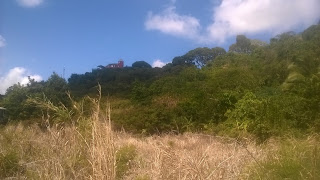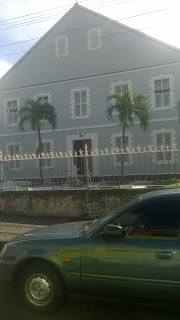Day 29, and one degree hotter 29C - phew.
Our trip today was called Coast to Coast and our tour guide was a German Barbadian, Tina - who has had a very interesting life, having moved from Germany 18 years ago, doing a bit of back and forth and then decided she'd like to be a Barbadian. she now thinks everythng Barbadian is the BEST! Water, rum, food, people, lifestyle, everything,
Seeing both sides of the island demonstrated the contrast between more calm Caribbean on the west, and more rough Atlantic on the East.
We set off from the man-made port, which had been built on to the island to accommodate the tourism/cruise ships, onto the mainland Bridgetown. Here wealth and poverty were right alongside each other.
It seems that Barbados is not volcanic, but coral that "folded" out of the sea.
Mountains of clay.
Hillsides of rain forest.
Again, as with many f the Caribbean Islands, history includes early Indian heritage, the fighting reputed to be cannibal Caribs, then Africans, Portuguese, French, Dutch and English.
There were three stops on our Coast to Coast trip
1. Highland Centre, situated in the middle of the island so there are views both oceans. We enjoyed fruit punch here, loud background music.
2. St John's Parish church, where there was a bit of hard selling from the locals, but we didn't really like the things that were on offer, and then back to
3. Bridgetown along the coast and through rain forest.
We passed Heroes Square and Gun Hill signal Station
More about Barbados here
We were dropped off at the shuttle bus stop, and it was hot. People were generally grumpy having to wait, and so toally relieved to return to an air conditioned spaceon the ship.
Our sail away was after 7 p.m so we sat on out on our veranda and had a cold drink as we watched (and listened) to the sail away.
Overnight sailing to Tobago, our last stop before the Amazon!



























































































